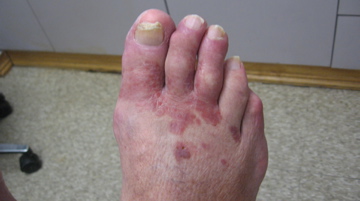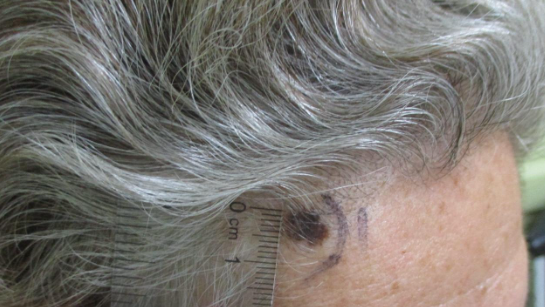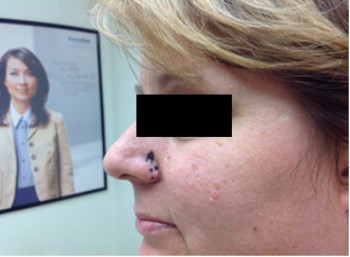CORRECT DIAGNOSIS:
Classic Kaposi’s Sarcoma
DISCUSSION:
In 1872, Moritz Kaposi described five men with an unusual multi-focal sarcoma of the skin in Hungary which he termed ‘idiopathic multiple pigmented sarcoma of the skin’. Classic KS has been historically considered a chronic, protracted disease primarily affecting elderly men, generally Jewish or Mediterranean/Eastern European descent. Despite occasional reports concerning its occurrence in transplant patients and its endemic form in Africa, KS received little attention until it became epidemic among male homosexuals and was recognized as a sign of AIDS. HHV-8 was recognized as the probable inductive agent of all clinical variants of KS.
The course is slowly progressive, with rare lymph node or visceral involvement. There may be great enlargement of the lower extremities as a result of lymphedema. There may be periods of remission, particularly in the early stages of the disease. Sometimes lesions will even involute leaving the patient with atrophic and hyperpigmented scarring.
TREATMENT:
All types of KS are radiosensitive. Local excision, cryotherapy, locally injected chemotherapy or IFN, and laser ablation have been used for troublesome, localized lesions.
REFERENCES:
Safai, B. (1987). Pathophysiology and epidemiology of epidemic Kaposi’s sarcoma. Semin Oncol, 14, 7-12. PMID: 2958244
Bolognia, J. L., Jorizzo, J. L., Rapini, R. P., et al. (2003). Dermatology. Spain: Mosby, pp. 1830-1833.
James, W. D., Berger, T. G., & Elston, D. (2006). Andrews’ Diseases of the Skin: Clinical Dermatology (10th ed.). Saunders, pp. 600-601.




